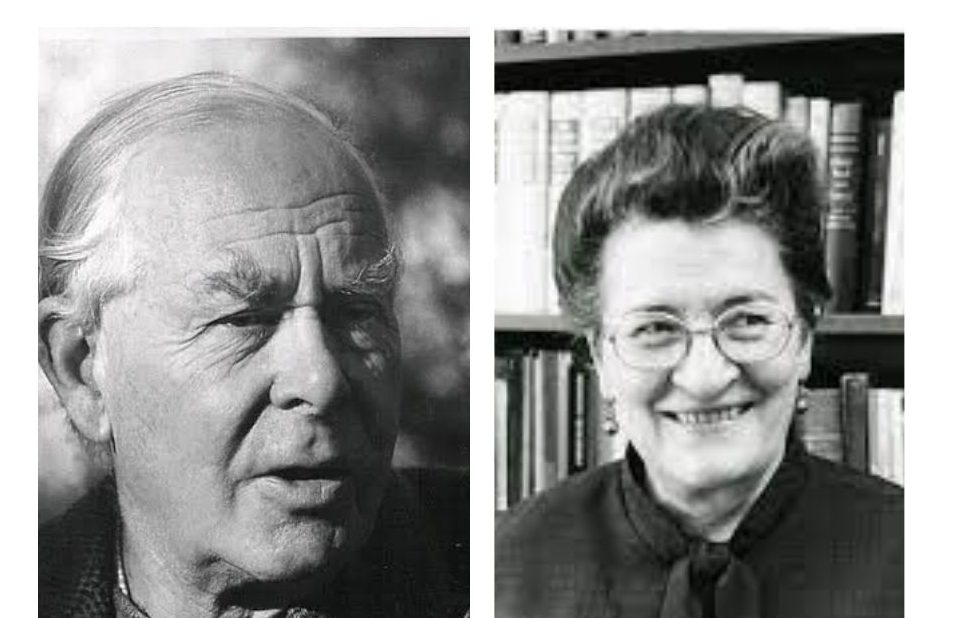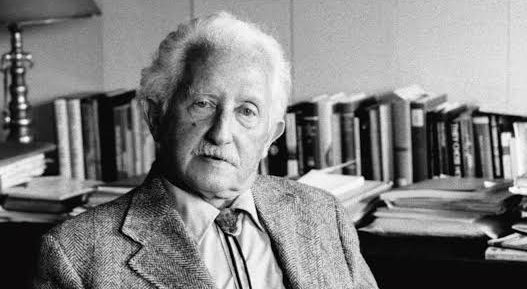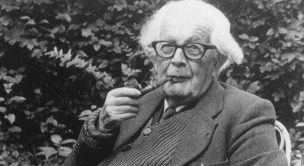As a parent, RIE® II* student and clinical psychologist who wrote a doctoral dissertation grounded in Attachment Theory (Bowlby, 1958, 1969, 1973, 1980; Bretherton, 1985), I never cease to be amazed at the similarities between the RIE principles and the basic tenets of Attachment Theory (AT). In the following article, I will share with you a few of the ways in which Educaring provides a method for applying the theory of attachment to the day-to-day job of raising children. I will also clarify some common misconceptions about attachment theory and their implications for infant care.
According to AT, an infant’s attachment to one or two preferred individuals is instinctual. From the moment they are born, every human infant exhibits “attachment behaviors”- crying, smiling, sucking, following and clinging that elicit caregiving behaviors from these preferred individuals, who become “attachment figures”. Adequate responses to the infant’s attachment behaviors create a psychological “secure base,” a conscious and unconscious sense, based on caregiving experiences with the attachment figure, that relationships can provide safety, intimacy, predictability, consistency, authenticity, trust and comfort. Non-responsiveness to attachment behaviors, Bowlby believed, could lead to the sense that relationships cause anxiety as well as social and emotional difficulties.
AT emphasizes that the infant’s psychological secure base is formed in large part during caregiving interactions. Emmi Pikler shared this belief that “the relationship between child and parent is established through the activities of care, that is feeding, changing, and bathing.” (David & Appell, pp. 9) She trained many individuals, including Magda Gerber, in how to do this respectfully: slowing down, picking up the infant carefully and gently, telling the infant what you are doing, appreciating the infant’s ability to participate, and responding to the infant’s cues of interest and desire to be involved in their care. The RIE principle, Involvement of the child in all caregiving activities to allow the child to become an active participant rather than a passive recipient, provides parents with specific techniques for caring for their children in a way that enhances their relationship and communicates security, love and trust, which are all necessary to form the secure base: Prepare ahead; observe the infant and wait until she is ready; explain what you are doing; slow down and pay full attention, are some examples of these very user-friendly, concrete steps that parents can follow in order to communicate a feeling of consistency, trust and security during caregiving.
According to AT, another requirement for the development of the secure base is sensitive and appropriate responsiveness to the infant’s attachment behaviors. Educaring provides parents with specific guidelines for responding sensitively to attachment behaviors. Let us take the attachment behavior of clinging, for example. The RIE principle, Observation of the child in order to understand her needs, instructs parents in the first aspect of sensitive responsiveness to any attachment behavior, that is identifying the behavior and assessing what the child needs. Magda tells us that when you observe your child making yourself available to the child and learning about your child’s temperament and personality and how she responds to her environment.
In Dear Parent, Magda counsels parents who observe that their infant cries hysterically until picked up to hold their child! That is being respectful of a newborn’s need for being held! Similarly, during parent-infant classes, when a child comes into class and chooses to stay with her caregiver, I tell parents to observe their child and be respectful of the child’s need for proximity and physical contact; when the child no longer needs it, she will let you know! Observation will let you know not only when any attachment behavior is activated, but also when the attachment behavior has been terminated by the parent’s appropriate response.
This leads me to an important misconception about infant attachment behaviors. Attachment behaviors are not always active. Bowlby emphasizes that the instinctual behaviors that comprise the human attachment behavioral system are governed by the same principles which govern instinctual behaviors in other animal species. Like mating instincts in birds, for example, the instinctual behaviors of the attachment behavioral system in humans are activated by environmental stimuli. Once they become activated, the behavior continues until an environmental response terminates the behavior. In this way, attachment behavior is “goal-directed,” the goal being regulating the distance between an infant and his or her mother.
For example, the infant’s need to cling to his mother may be activated when the infant is distressed, but once the mother picks up the infant and holds him, the infant no longer needs to be held. According to this model, it is not the case that infants always need to be held and should be “attached” to their parents 24 hours a day. Observation teaches us that children need and want to be held, and it also teaches us when the instinct for holding has been satisfied and when infants are ready for something else, namely independent exploration of the environment.
Bowlby places special emphasis on the relation between security and independence. He believed that a secure base is a prerequisite for the infant’s exploration of his environment, which leads to his mastery of social, emotional, physical and cognitive developmental tasks. Although they seem antithetical on the surface, Bowlby regarded exploration of the environment and seeking proximity to the caregiver when the child experiences danger, fatigue, distress or illness as two separate, co-evolved behavioral systems.
The complementarity of dependence and independence is central to attachment theory. Bowlby argued that the needs for contact with the attachment figure and self-reliance/autonomy both serve an individual advantageously when they work together. He considered the balance between attachment and exploration to be the foundation for the development of normative mental health. In experimental settings, security in infant-mother attachment is defined as a balance between an infant’s attachment behaviors and exploration of the environment (Ainsworth, Blehar, Waters & Wall, 1978).
The RIE principles Time for uninterrupted play and Freedom to explore and interact with other infants are consistent with the crucial role that exploration of the environment plays in healthy infant development according to AT. Educaring proposes a paradigm for caring for infants that focuses on this balance between time together with caregivers and time apart from caregivers and helps parents work out the emotional, environmental and logistical obstacles to achieving this desired balance.
Gerber (2002) elaborates on the difficulties inherent in finding a balance between respecting infants’ needs for proximity to parents and their needs for independent exploration that she calls Time together, Time apart: “When adults try to do their own work while trying to pay attention to their children, both parent and child end up feeling frustrated. This trap, I feel, is created by books and advisors who say that a baby needs to have his parent near him at all times…Many parents are concerned about not being ‘good parents’ when they are not with their child. I still do not understand why it is so difficult for parents to accept that it is alright to leave a child to explore in a totally safe place, while the parent is available but doing something else within hearing distance” (Gerber, reference).
Aside from giving parents permission to allow their children freedom to explore, RIE also offers parents a wealth of ideas and suggestions about setting up an environment that is conducive to their infant’s freedom, a necessary condition for exploration: The presence of an available caregiver who is paying attention but not intrusive; a peaceful environment that is not over-stimulating by way of too much noise, light or activity; simple, safe, age-appropriate objects that encourage the child to be active; gross motor and fine motor challenges; freedom to move; and gates that provide safe boundaries, for example. The RIE principles Basic trust in the child to be an initiator, an explorer, and a self-learner and An environment which is physically safe, emotionally nurturing, and cognitively challenging give parents specific guidelines to follow to facilitate their infant’s exploration and to make it pleasurable for the child and the parent.
Safety, which Gerber emphasizes is essential for infants’ well-being and for parents’ ability to relax and enjoy their children, is also a prerequisite for exploration. AT posits that active exploration is terminated during danger or threat. Infants require safe, age-appropriate challenges in the environment for which they feel ready. Otherwise, they will instinctually turn off the exploration system and an attachment behavior will be activated. The more age-appropriate and safe the environment, the more the infant will explore it willingly.
As the infant matures, the instinctual responses that Bowlby delineates develop into more refined and complex behaviors. The integration of the instinctual responses coincides with the child’s cognitive development. Towards the end of the first year, and especially during the second and third when the child is acquiring the use of language, a child is busy constructing “working models” of how the physical world, how his mother and other significant persons, and how he himself may be expected to behave, and how each interacts with all the others (Bowlby, 1969). Within the framework of these working models the child evaluates particular aspects of his environment and makes his “attachment plans.” (Bowlby, 1969)
As the individual matures, expectations about interactions between oneself and others are built from actual caregiving experiences. These expectations, which are integrated with the emotional experiences associated with the interactions, become internalized and create the “internal working model” (Bowlby, 1969, 1973, 1980; Bretherton, 1985).
The internal working model (IWM) contains working models of self and other that are complementary. For example, if the attachment figure provides for the infant’s needs for proximity and comfort while simultaneously allowing for the infant’s needs for independent exploration of the environment, the child will probably develop a model of self as valued and self-reliant and a model of other as dependable, sensitive and available. If the attachment figure is rejecting of the infant’s needs, the child will probably construct a model of self as unworthy and incompetent and a model of other as intrusive, unreliable, and uncaring (Bowlby, 1973; Bretherton, 1995). The above provides a theoretical framework for how and why responding sensitively, being available and communicating honestly and consistently, the ingredients of respect, results in children who are securely attached and who feel self-confident, resourceful, secure and authentic. Isn’t it nice to know that what we are doing is consistent with one of the most well-known and well-respected theories of child development?
Parents in my observation and guidance classes sometimes say, “I am worried that my child isn’t attached.” I explain, “All human infants do it; it’s an instinctual behavior that is species-specific. It’s not a question of if or how strongly your infant attaches to you. Rather, it’s a question of the style or strategy that your infant develops in order to fulfill her instinctual need for felt security. In research studies, infant attachment strategies are broadly classified as either ‘secure’ or ‘anxious.’ ‘Secure’ strategies are defined as balanced between actively exploring the environment and seeking out contact with the attachment figure when the infant is distressed, ill, fatigued, when faced with environmental danger, and upon separation from and return of the attachment figure. ‘Insecure’ strategies are characterized by exploration that is either non-existent or indifferent, and either mix active comfort-seeking with continued crying, struggling or rigidity or avoid seeking out the attachment figure during times of distress, danger, etc.” I suggest that parents carefully observe their childrens’ behavior in order to evaluate their child’s attachment strategy.
I have provided you with a number of examples of Educaring principles and techniques that I believe are consistent with the requirements for the development of “secure” infant attachment strategies proposed by AT. The quality of early attachment is important to all people caring for infants because it is well-documented that secure infant-mother attachment is associated with social and emotional competence.
Further studies are required to examine the relation of the RIE principles and infant-mother attachment. For example, it would be interesting to examine differences in infant-parent attachment between parents who are trained to respectfully observe their infants and those who receive some basic education in child development without training in respectful observation. For lack of scientific evidence that Educaring facilitates the development of an infant’s psychological “secure base,” let us respect and enjoy our children and be respectful of the choices that parents make in responding to what Magda calls “the many perplexing issues of parenthood.”
*RIE II is the Practicum portion of the RIE professional training
By Johanna Herwitz, Ph.D. & RIE Associate in New York ,NY
Educaring, Volume 26, No. 1, Spring 2006, Resources for Infant Educarers.
REFERENCES
Ainsworth, M. D. S., Blehar, M. C., Waters, E., & Wall, S. (1978). Patterns of attachment: A psycho-logical study of the strange situation. Hillsdale, NJ: Erlbaum Associates.
Bowlby, J. (1958). The nature of the child’s tie to the mother. International Journal of Psychoanalysis, 39, 350-373.
Bowlby, J. (1969, 1982). Attachment and Loss. Volume I: Attachment. New York: Basic Books.
Bowlby, J. (1973). Attachment and Loss. Volume II: Separation. New York: Basic Books.
Bowlby, J. (1980). Attachment and Loss. Volume III: Loss. New York: Basic Books.
Bretherton, I. (1985). Attachment Theory: Retrospect and prospect. In I. Bretherton & E. Waters (Eds.), Growing points in attachment theory and research. Monographs of the Society for Research in Child Development, 50, (1-2, Serial No. 209).
Bretherton, I. (1995). The origins of attachment theory. In S. Goldberg, R. Muir, & J. Kerr (Eds.), Attachment theory: Social, developmental and clinical perspectives. Hillsdale, NJ: The Analytic Press.
David, M. & Appell, G. (1973). Loczy: An Unusual Approach to Mothering. Paris: Editions du Scarabée.
Gerber, M. (2002). Dear Parent: Caring for Infants with Respect. Los Angeles: Resources for Infant Educarers.
Gerber, M. & Johnson, A. (1998). Your Self-Confident Baby. New York: John Wiley & Sons.



 Jean Piaget’s Way of Seeing and RIE®
Jean Piaget’s Way of Seeing and RIE®